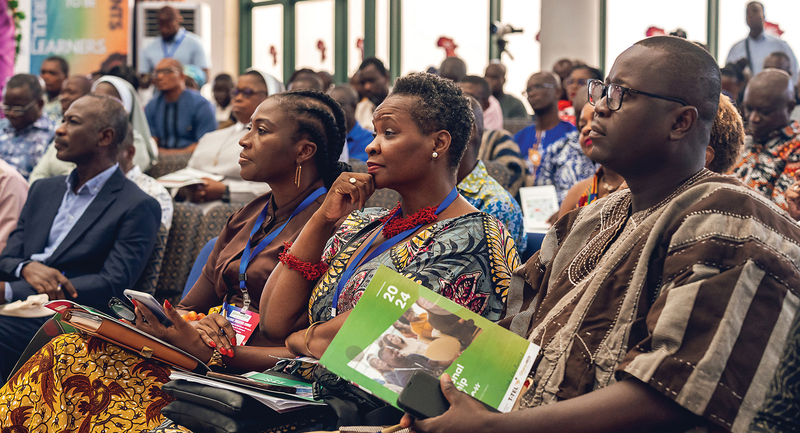I’ve played basketball my entire life, especially growing up as a kid in Philadelphia. I was the first one on the court in elementary, middle, and high school, and the last one to leave the gym. I played point guard on a few teams that won championships. I thought I was pretty good, but some of my high school coaches disagreed, so, although I was on the school team, I didn’t get much playing time. I was never the star player in the local recreation leagues I participated in, but I still dreamed I had a chance to make the NBA—until a few honest teachers spoke with me. One of my high school teachers reminded me that aiming for a career in basketball would involve financial instability, saying, “Son, you can’t jump over a credit card, so you may want to rethink trying for the NBA! You’re smart. Why don’t you get an MBA, instead?”
I listened. I headed to college and graduated, making the dean’s list, and went on to become a teacher and principal for the next 36 years. I can honestly say I found my life’s calling, and it isn’t basketball.
Tapping Basketball Skills for Leadership
Early in my career as a principal, I used skills I’d learned on the court to help teachers; for instance, I tuned in to various colleagues’ strengths, just as I’d recognized who on my team excelled at what. I eventually identified similarities between the role of a principal and that of a point guard. A point guard—often referred to as “the coach on the floor”—is an unofficial coach, just as a principal is often a coach for a teacher—or at times for the whole school. The point guard sets the direction for the team and makes decisions in the way a principal makes pivotal decisions each day.
Developing a culture of literacy in school and the community would improve access, opportunity, and equity for all students.
The most important decision of my career was when I decided to become the point guard for literacy in our school. I chose literacy because I wanted to make the biggest impact on my students. I’ve been leading inner-city schools for over two decades, and I’ve seen how important literacy is to improving the lives of students in some of our most challenging communities. Developing a culture of literacy in school and the community, I realized, would improve access, opportunity, and equity for all students.
What It Means to Lead for Literacy
I believe any principal can and should be the point guard for literacy in their schools. We are the leaders who make courageous, important decisions about the school’s literacy curriculum and how to create effective instruction. A “point guard principal” establishes a mission and goals for the school, and creates a culture that promotes staff learning, collaboration, trust, and creativity. When teachers know we trust and respect them to be instructional leaders, they become more engaged. They contribute to building a positive school culture—and when the emphasis is on literacy, they do all they can to strengthen students’ reading and writing. Let’s consider some key attributes point guards and principals share.
A 'point guard principal' establishes a mission and goals for the school, and creates a culture that promotes staff learning, collaboration, trust, and creativity.
A good point guard:
Knows every position and keeps their head in the game. They are aware of what every teammate on the court is doing. Just so, the principal must be aware of all efforts in the school to build literacy. A principal should be visible in classrooms and available to observe teachers and offer feedback. I try to keep aware by faithfully attending literacy-related PD sessions at the school, joining my literacy leaders on observations and walk-throughs, and meeting with teachers in teacher-led PLCs, especially those focused on literacy.
Knows all the plays the team has practiced. Traditionally, the point guard on a basketball team attends all meetings with coaches to ensure that they know all the plays various team members might be taught. Similarly, the principal must know in-depth the curriculum used at the school to teach literacy—or at a minimum, be knowledgeable of the scope, sequence, and materials used. I keep informed of teachers’ “plays” by attending the planning meetings of grade-level teams, where we discuss the scope and sequence for the week, lesson plans, and objectives.
Teaches others on the team key plays and techniques, encouraging learning. Similarly, a principal should create a learning culture that empowers staff and students to take risks, be creative, and embrace learning. I see my role as creating a culture of literacy, which means, for one thing, supporting our school’s library as the center of literacy and learning.
Leads the team in assists. An assist is when a player passes the ball to a teammate, helping them score a basket. For a principal, delivering an “assist” would mean supporting teachers and staff in their learning; studying school data and monitoring students’ progress in reading and writing; and providing adequate resources to every classroom, teacher, and student.
Advocates for the team and champions equity. A principal who prioritizes literacy would ensure that there are diverse collections of books in each classroom and would promote access and opportunity for all students. The school I lead has an ongoing partnership with The United Way of Delaware to provide free books for our students. Through the support of organizations like DuPont and the University of Chicago, our students can select—and keep—multiple books they’re interested in and begin building their own libraries. Beyond text choices, equity also means working with staff to create an environment where teachers and students feel a sense of belonging and community.
Never Underestimate Your Role!
Since we’re pulled in so many directions, school leaders sometimes underestimate our impact on student success. But the decisions we make truly impact student learning and outcomes. By combining systemic supports for a literacy-focused culture with a daily commitment to improving literacy instruction in every classroom, my school has seen sustainable progress in literacy achievement. For instance, our 7th and 8th graders have improved their proficiency on the state tests in ELA by 10–15 percentage points in each grade.
It all begins with the principal’s vision. As I learned early in life, the point guard drives the team toward success, even if he never makes it to the big leagues.









